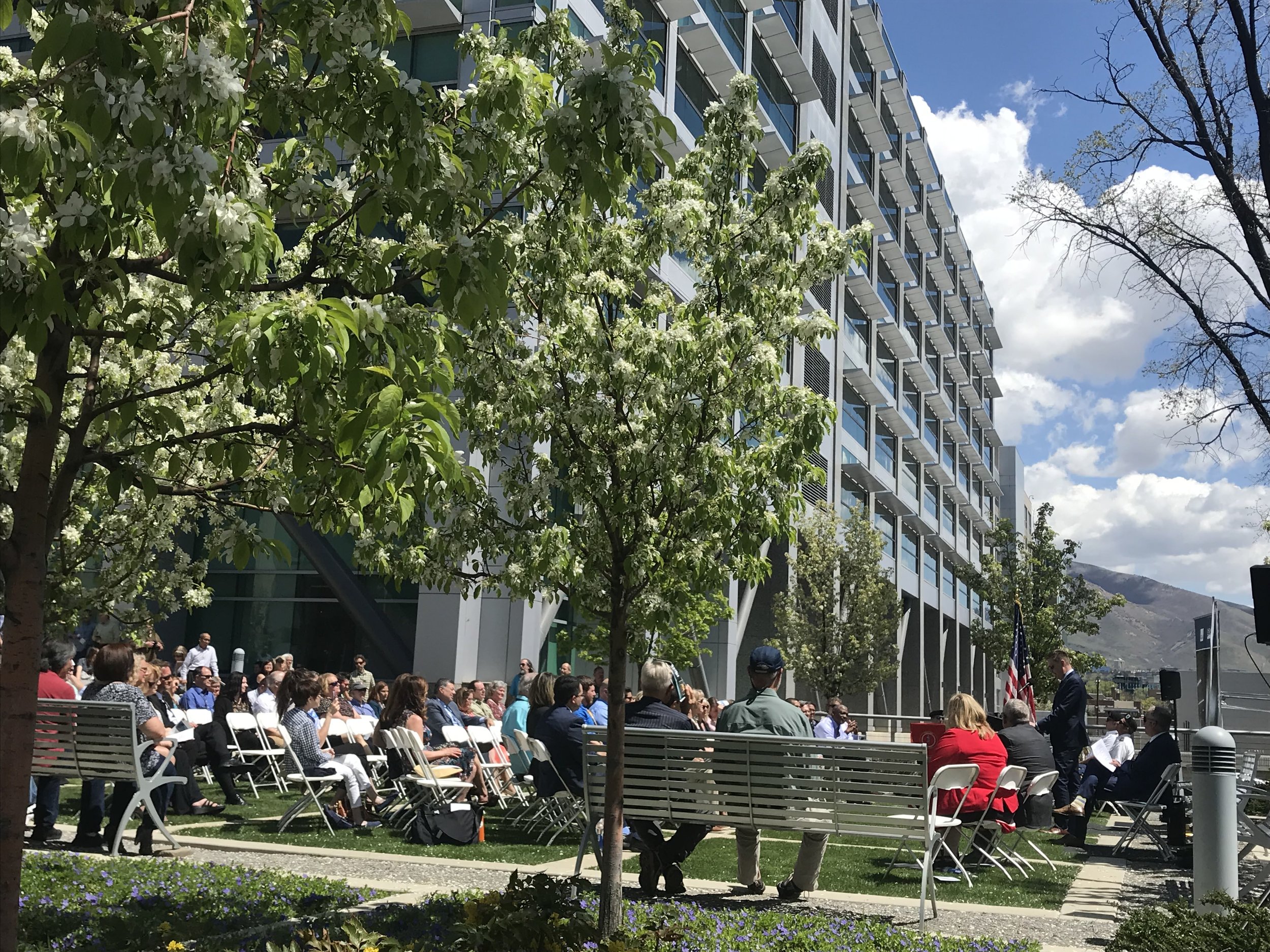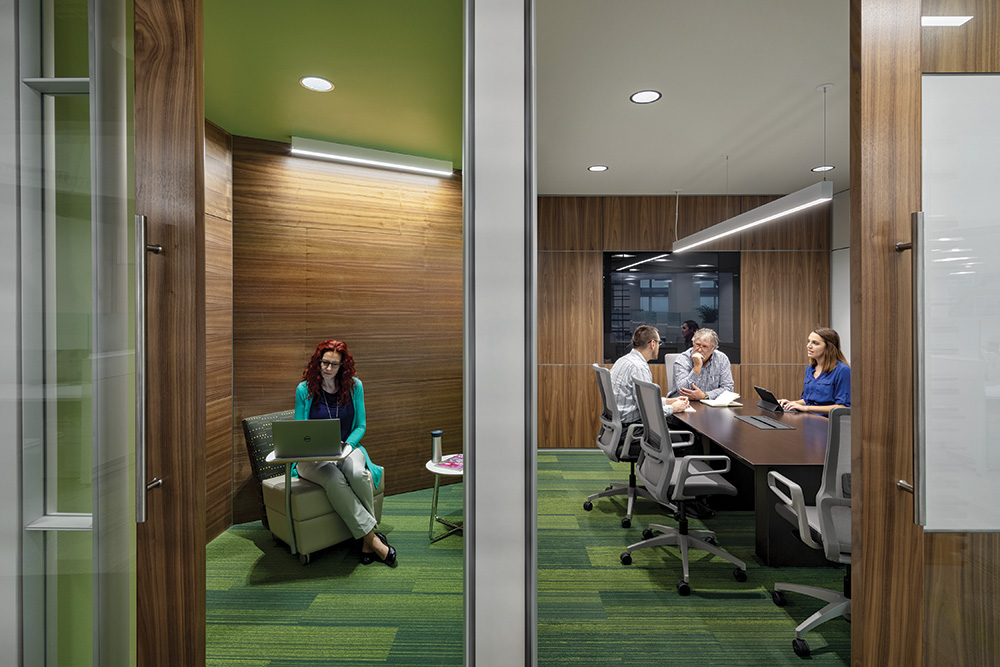Every Friday at 4 p.m. for more than four decades, the employees at GSBS Architects have gathered in their Salt Lake City conference room for “wine down.”
The informal get-together — a play on the words wind down — is a way to relax at the end of the workweek.
The firm provides a small budget for food, and employees take turns hosting it. Sometimes they bring chips and salsa or cheese and sliced meats; other times it’s cookies or something they’ve cooked at home.
And — as the name suggests — people drink wine or beer, but there’s soda or other nonalcoholic beverages, too.
“We chat, laugh and get to know each other,” said Eric White, director of business development. There’s only one rule: “You can’t talk about work.”
But, these days, GSBS staffers — like many employees across the state and country— have been working remotely from their homes during the coronavirus.
Rather than let a pandemic break the tradition — one that started in 1978 — the firm took its social hour online.
Across the nation — with cabin fever setting in — these laptop get-togethers are a popular trend, providing co-workers and friends with much-needed socialization.
Zoom is the most popular online platform for these visual cocktail parties, which feature a checkerboard of faces on everyone’s computer screen. But Skype, Google Hangout and FaceTime are acceptable alternatives.
Actress Suzanne Somers has been hosting virtual cocktail parties as a way to survive social distancing. And recipes for a “quarantini” cocktail also have been making the rounds on social media.
For the GSBS staffers, one of the best parts about this virtual laptop party is seeing everyone’s personal spaces as well as family and pets, said employee Melissa Gaddis, who noted her co-workers have made the hour amusing by dressing in funny outfits and making midparty costume changes.
“Even though it is a massive group on Zoom, and one-on-ones are not feasible, we still have a good time,” she said. “This happy hour has brought a lot of joy to me and fellow GSBS’ers and has added value to the work from home lifestyle.”
The downside? Employees have to bring for their own snacks and beverages.
Kevin Miller, a principal at GSBS, said after the first week of working remotely — which included a magnitude 5.7 earthquake — “our people were wondering where the stable ground was.”
He scheduled virtual wine down, unsure if anyone would join it.
“From my own experience, working from home seems to take more energy than being in the office,” he said, “and by 4 p.m. on Friday, I was ready to shut it down, and I figured others would be, too."
For the first meeting, he logged in a little early and — to lighten the mood — put a beach scene as his background, complete with breaking surf and palm trees swaying in the breeze.
Then he waited.
“Much to my surprise,” he said, “the staff began logging on en masse.”
Soon everyone was fooling around with their backgrounds, trying to come up with a video or image that would make the group laugh, he said. One employee took the group on a short tour of his condo; kids wanted to see what the fuss was about and pets wandered through.
“It was everything that I love about GSBS,” Miller said. “We were there, united by our shared enthusiasm for our work, to support each other, to share a laugh and to figure out how to keep our community in place despite the challenges that have been thrown at us.”




![IMG_2980[4].jpg](https://images.squarespace-cdn.com/content/v1/5395dbcbe4b032d797ffa5d1/1578673044023-FALNROL9GL3BSWRAHN7U/IMG_2980%5B4%5D.jpg)








